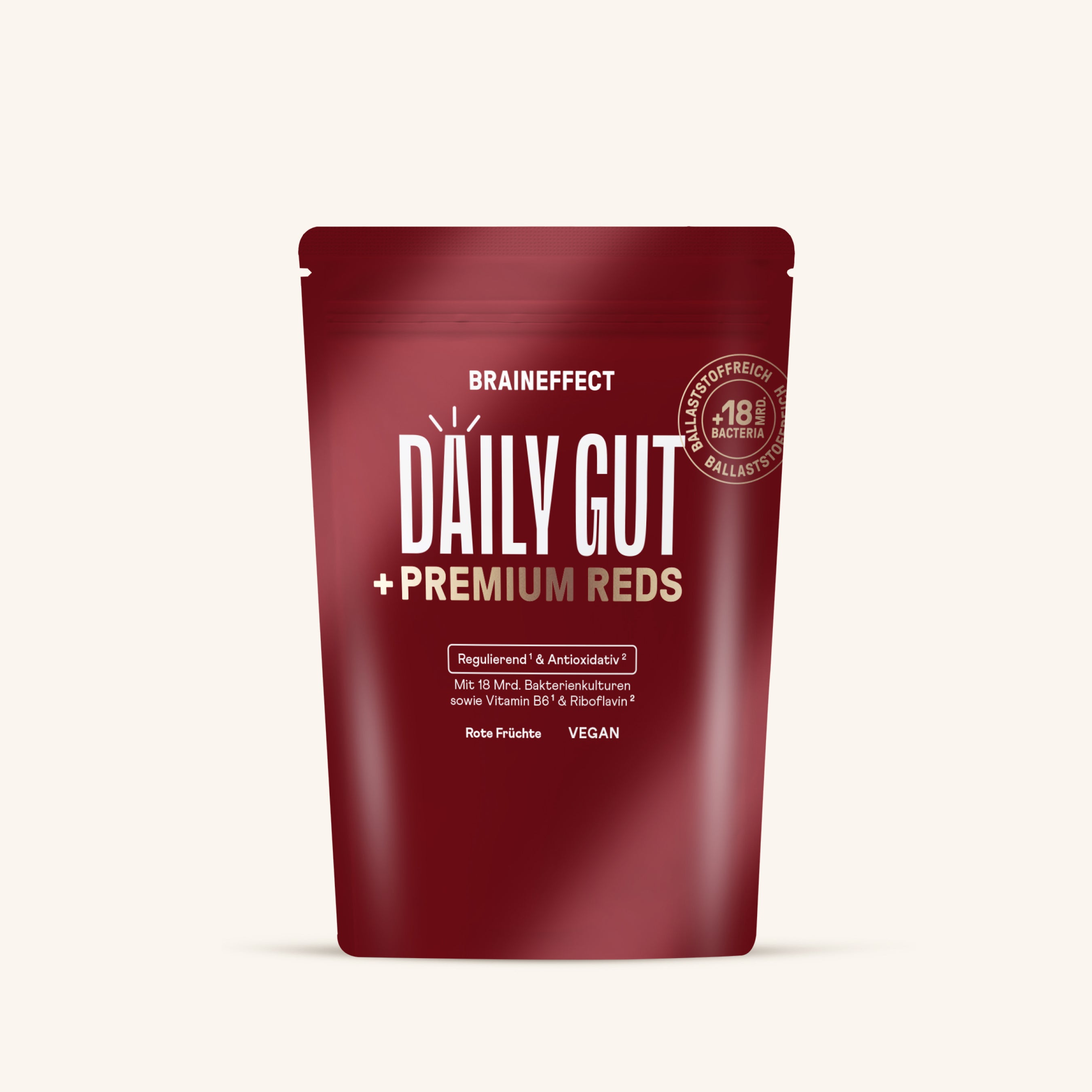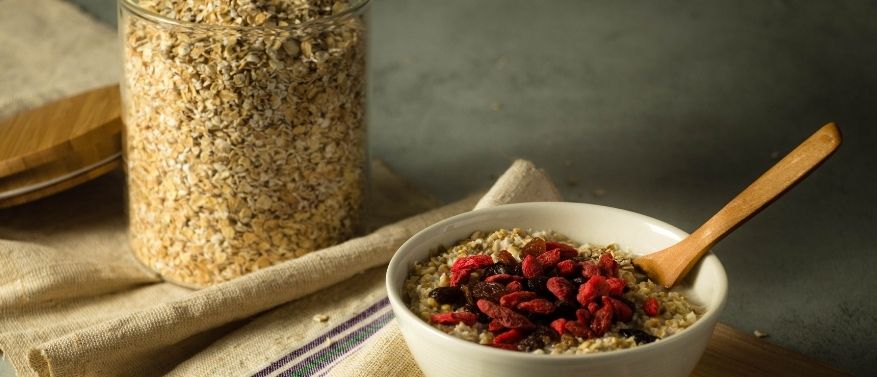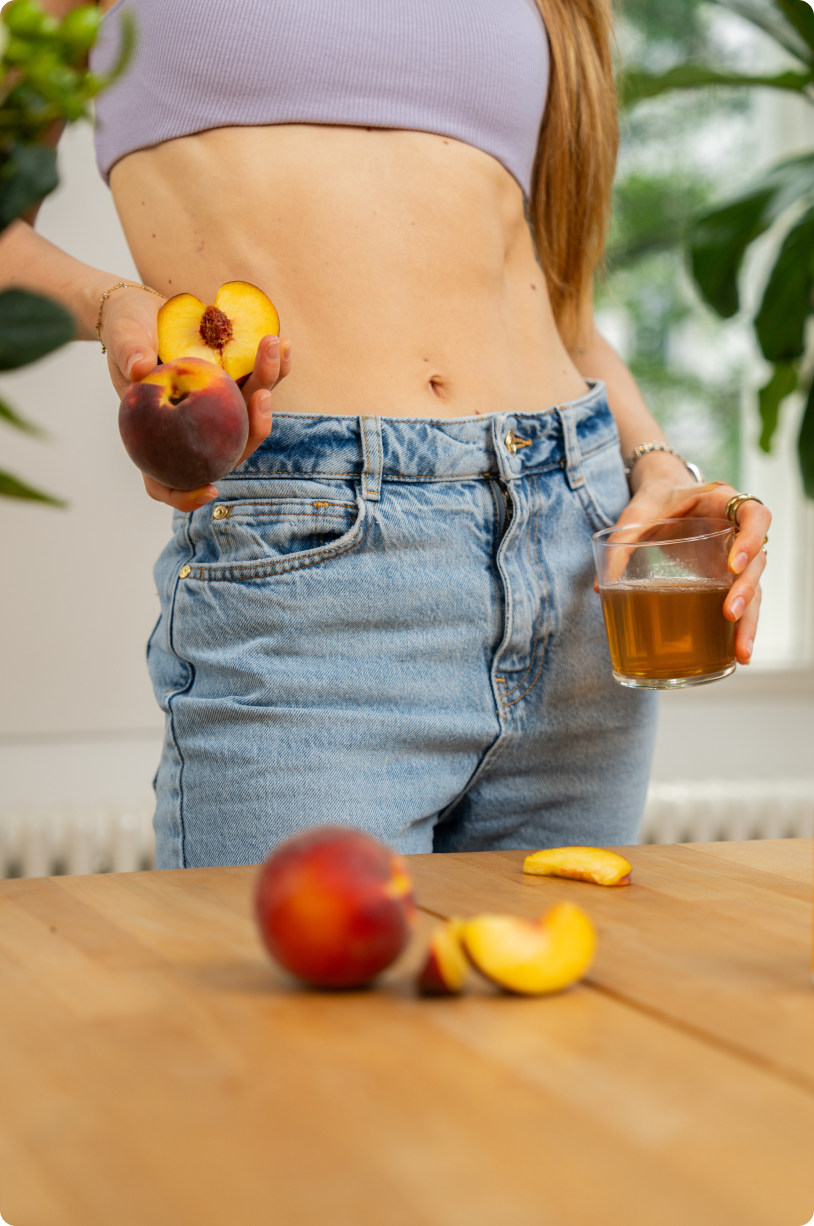Fiber is an indigestible component of food. Contrary to the name, it's not a burden, but rather a benefit for your digestion.
Table of contents
1. What are fiber?
Fibers are indigestible food components . These are usually carbohydrates from plant sources . They occur naturally in many grains, fruits, vegetables, and legumes.
The class of dietary fiber can be further divided into water-soluble and water-insoluble fiber. While water-soluble fiber is found primarily in fruits and vegetables , insoluble fiber comes either from grains such as corn and wheat or from legumes .
The difference between water-soluble and insoluble fiber only becomes apparent after it reaches the intestine . Unlike regular food, insoluble fiber is not broken down by intestinal bacteria.
By the way, contrary to popular belief, dietary fiber is not synonymous with crude fiber . In fact, the opposite is true: While all crude fiber is dietary fiber, dietary fiber is not necessarily always considered crude fiber.
Due to its digestive regulating function, fiber is an important component of the human diet . The recommended daily fiber intake for adults is approximately 30-40 grams per day . On average, you should aim for at least 22 grams per day .
To help you feel good in your gut, we developed DAILY GUT drink powder. In addition to 9 billion live bacterial cultures, it contains soluble fiber, which provides the friendly inhabitants of your gut with an optimal nutritional base.

2. The effect of fiber
Fiber is primarily known for its supportive effect on the digestive process . Since it is usually not broken down but remains in the gastrointestinal tract, it can promote satiety and improve stool quality .
At the same time, fiber also dilutes the energy content of the food we eat : As the insoluble fibers swell in the stomach, we feel full much faster. Therefore, insoluble fiber can be a great support for weight loss or a low-carb diet [1].
Since fiber is almost always a complex carbohydrate, it causes blood sugar to rise much more slowly than pasta and the like. This means that they not only provide you with sustainable energy but also reduce unpleasant insulin peaks and the associated performance slumps .
Conversely, fruits and vegetables, due to their high water-soluble fiber content, can be a good natural remedy for constipation . One study even found that fiber had positive effects in connection with irritable bowel syndrome [2].
Fiber also plays an important role as a bile acid binder . This is produced in the body as a breakdown product of cholesterol. It is therefore essential for fat digestion and absorption . Thus, fiber is also a valuable aid in our lipid metabolism .
In this context, there have already been a number of studies that have linked a high-fiber diet with a reduction in the risk of type 2 diabetes as well as colon and prostate cancer [3], [4].
3. Soluble fiber
Soluble fiber includes primarily pectin, inulin, oligofructose, and other prebiotics. These usually come from fruits or vegetables. They primarily act as bulking agents in the stomach : they can bind enormous amounts of water, thus softening stools.
At the same time, similar to insoluble fiber, they can also increase the volume of stomach contents and promote a faster feeling of satiety . A good example of this is chia seeds , which are so popular for this reason in part. Soluble fiber also serves as a food source for our intestinal bacteria .
They are therefore essential for the health of your intestinal flora . Furthermore, your sugar and fat metabolism, as well as the regulation of your immune system and nervous system, also benefit from a substantial amount of soluble fiber.
4. Insoluble fiber
Cellulose and lignin are considered insoluble fiber. They are found primarily in whole grain products, mushrooms, and, of course, legumes. Unlike soluble fiber, they are hardly broken down by our intestinal bacteria .
Rather, they remain " in one piece ," so to speak, and thus increase the volume of the stomach —and later the stool . Unlike soluble fiber, insoluble fiber does not bind water. Thus, they are very solid and can exert considerable pressure on the inner walls of the stomach.
What may sound unpleasant at first is actually very beneficial, especially for digestion: A good amount of insoluble fiber stimulates the movement of the intestines and accelerates the transport of stomach contents to the outside.

5. High-fiber foods
A high-fiber diet can bring you many benefits. If you want to incorporate more healthy fiber into your diet, you can't really go wrong with grains, high-fiber fruits, and legumes.
High-fiber vegetables (per 100 grams):
- Potatoes: 8 g
- Artichoke: 6 g
- Pumpkin: 5 g
- Spinach, Brussels sprouts and kale: 4 g
- Carrots and sweet potatoes: 3 g
- High-fiber fruits (per 100 grams):
- Passion fruit: 11 g
- Avocado: 7 g
- Pomegranate: 4 g
- Kiwis, figs, pears, apples and bananas: 3 g
High-fiber (pseudo-)cereals (per 100 grams, uncooked):
- Corn bran: 79 g
- Wheat bran: 43 g
- Rice bran: 21 g
- Barley: 17 g
- Oat bran and rye: 15 g
- Wheat and wheat germ: 13 g
- Oats and spelt: 11 g
- Buckwheat: 10 g
- Millet: 9 g
- Quinoa, amaranth and corn: 7 g
- Wild rice: 6 g
High-fiber legumes (per 100 grams, uncooked):
- Green beans, broad beans, kidney beans and white beans: 25 g
- Green peas: 22 g
- Lupins and lima beans: 19 g
- Mung beans: 18 g
- Black beans: 16 g
- Chickpeas: 12 g
- Lentils: 11 g
High-fiber seeds and nuts (per 100 grams):
- Chia seeds: 34 g
- Flaxseed: 27 g
- Pumpkin seeds: 18 g
- Almonds: 14 g
- Sesame seeds: 12 g
- Sunflower seeds, pine nuts and pistachios: 11 g
- Hazelnuts and pecans: 10 g
- Macadamia nuts: 9 g
- Walnuts: 8 g
But be careful: Depending on your predisposition, an unpleasant side effect of increased fiber intake can be bloating or a feeling of fullness. This risk is especially high if you're just starting a high-fiber diet.
It's therefore a good idea to make the transition slowly . Start with a cup of lentils or beans, or eat porridge every day. After a while, your digestion will adjust to the new nutrients, and you can gradually increase your intake.
Additionally, you should also make sure to drink a little more fluids with high-fiber meals than with low-fiber ones. This helps the water-soluble fiber swell.
Some caution is also advised if you are taking medication at the same time . Fiber is known to inhibit the effects of various medications such as paracetamol, penicillin, the antithyroid medication levothyroxine, and the antidepressant doxipine. The same applies to some medications used to treat urinary tract infections.
6. Conclusion
Not only vitamins and minerals are important for a balanced diet! Fiber also fulfills many important functions for our body.
In particular, a good mix of soluble and insoluble fiber can help you regulate your digestion, feel full faster, and perhaps even lose a few pounds.
In addition, fiber supports fat metabolism and provides you with plenty of valuable energy in a sustainable way. Unlike simple carbohydrates, it causes your blood sugar level to rise slowly, thus avoiding the unpleasant insulin spike.
To incorporate fiber into your diet, you should eat grains, fruits, and legumes daily. If you're not used to a high-fiber diet, you should gradually introduce the new foods into your daily routine.
This will help you avoid bloating and fullness. You should also consult your doctor if you are taking certain painkillers or antidepressants.
Apart from that, your digestion will thank you very much if you regularly consume sufficient soluble and insoluble fiber.
As a little boost for your morning routine, DAILY GUT powder is available in three delicious flavors. Simply stir a teaspoon into muesli, porridge, or water for a delicious and nutritious breakfast!
7. Sources
[1] Lattimer, JM; Haub, JD (2010), Effects of Dietary Fiber and Its Components on Metabolic Health, Nutrients, Volume 2, Issue 12, p. 1266-1289, https://www.ncbi.nlm.nih.gov/pmc/articles/PMC3257631/.
[2] El-Salhy, M.; Otterasen Ystad, S.; [...]; Gunderson, D. (2017), Dietary fiber in irritable bowel syndrome (Review), International Journal of Molecular Medicine, Volume 40, Issue 3, p. 607-613, https://www.ncbi.nlm.nih.gov/pmc/articles/PMC5548066/.
[3] McRae, MP (2018), Dietary Fiber Intake and Type 2 Diabetes Mellitus: An Umbrella Review of Meta-analyses, Journal of Chiropractic Medicine, Volume 17, Issue 1, p. 44-53, https://www.ncbi.nlm.nih.gov/pmc/articles/PMC5883628/.
[4] Ma, Y.; Hu, M.; [...]; Huang, P. (2018), Dietary fiber intake and risks of proximal and distal colon cancers: A meta-analysis, Medicine (Baltimore), Volume 97, Issue 36, e11678, https://www.ncbi.nlm.nih.gov/pmc/articles/PMC6133424/.














